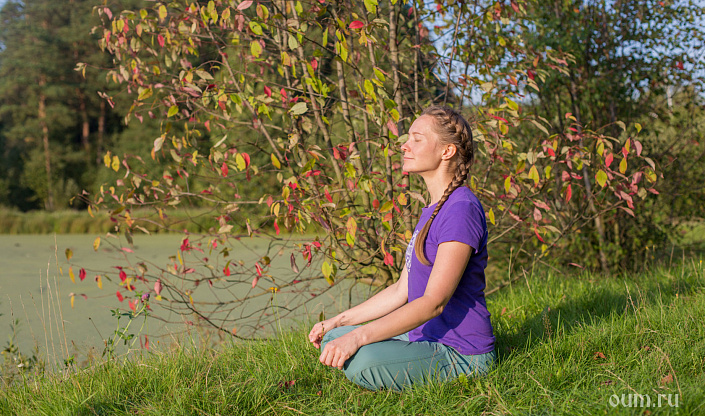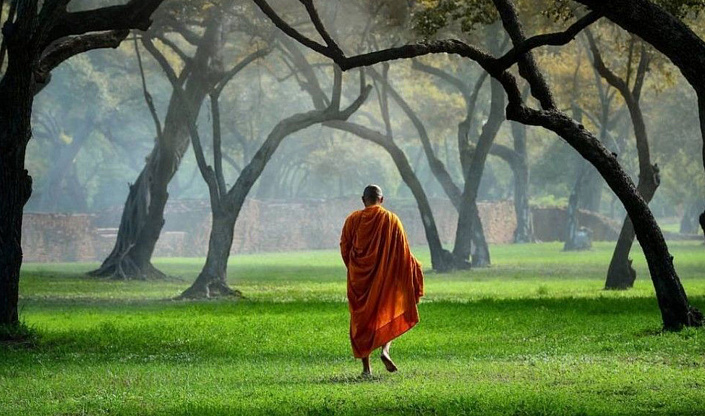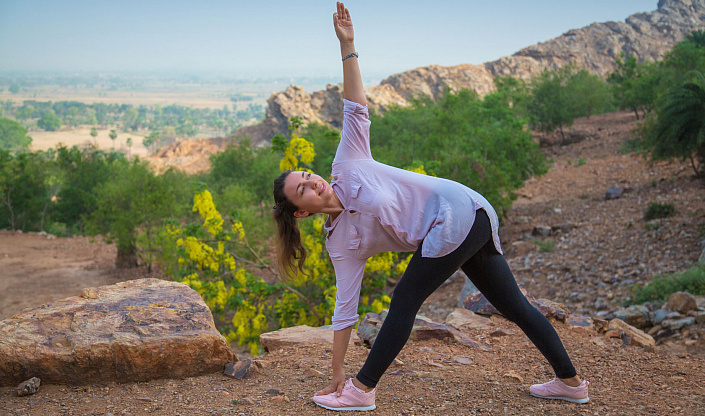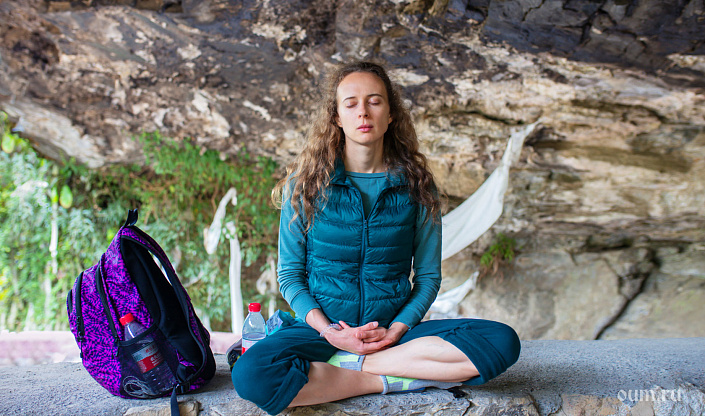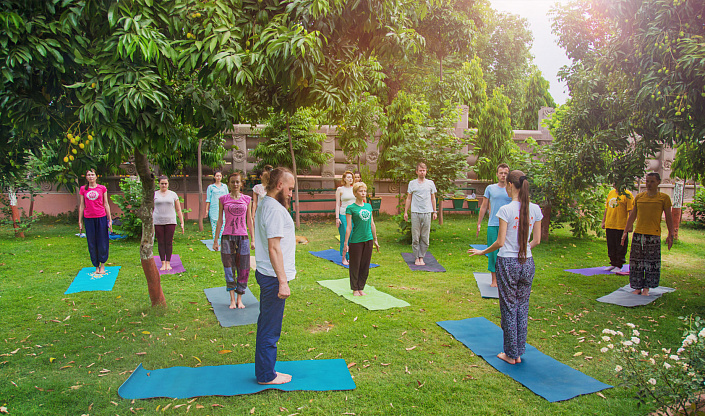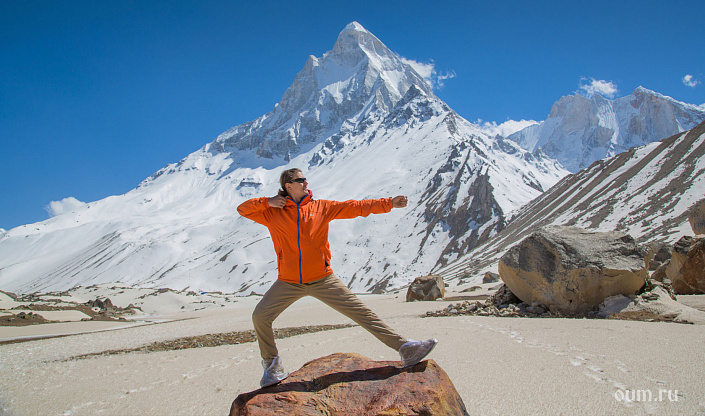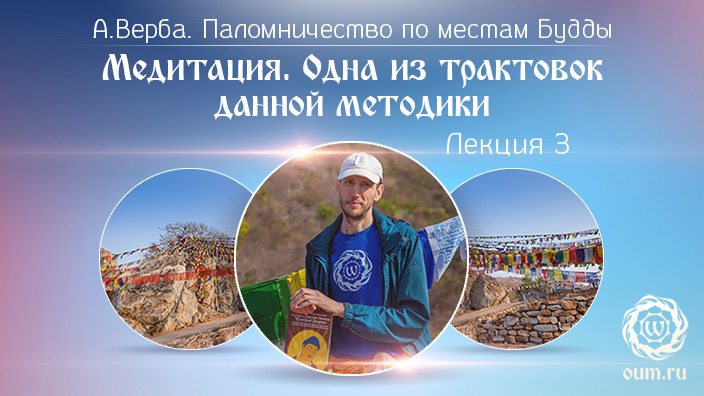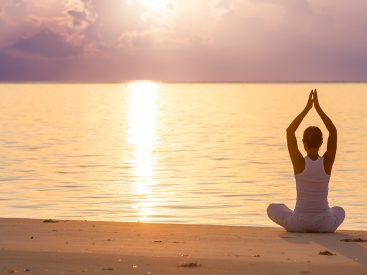NSWith the word “meditation”, the imagination draws us a practitioner who sits in the lotus position and breathes peacefully through his nose. However, there are many meditations. For example, athletes who have learned to compete in a meditative state achieve much greater results. Because the capabilities of our body are limited only by the framework of our own consciousness. And what are the photos of Tibetan monks who can meditate while in a pot of hot water.
Thus, you can stay in a meditative state constantly. This is the essence of meditation, when it ceases to be an independent practice and becomes just a state. After all, the goal of any meditation is to learn to be calm and mindful in everyday life, and not just sitting in padmasana.
It is easy to be peaceful and serene sitting high in the Himalayas, but it is important to be able to maintain your peace and serenity in the market square.
So what is meditation? Let’s try to find out what unites all meditation practices.
Patanjali probably most accurately wrote about what a meditative state is: “Sitta-vritti-niroddhah”, which in translation means: “Restraining the disturbances inherent in the mind.”
“There is nothing better than peace, there is nothing better than emptiness,” said the Chinese philosopher Yang Zhu. The Buddha said the same thing: “There is no happiness equal to tranquility.” And this is precisely the ultimate goal of meditation: to find deep peace of mind and learn to stay in it constantly. And this is the most important goal of yoga, for everything else follows from this.
What kind of meditations are there? It is often possible to “catch” a certain state of calmness and thoughtlessness, for example, while washing dishes. The secret is simple: by concentrating on something, we acquire a state which in yoga is called “pratyahara” – the distraction of the senses from objects, and then we acquire “dharana” – the process of long-term concentration on any object. In this case, during the dishwashing process. But if you deliberately concentrate on something sublime, then the effect of such meditation will be much greater. This is what everything unites: any meditation practice includes the distraction of the senses from external objects and concentration on the meditation object.
So, consider six meditations that will bring awareness, harmony and fulfillment into your life in every moment.
As mentioned above, padmasana meditation is just one of its types. One should not get attached to the form – it is important to see the essence. Not everyone can put on saffron, renounce the world and go to a forgotten ashram to sit in meditation for 8-12 hours a day. And not everyone needs it. And the secret is that you can meditate in almost any situation. One type of meditation is walking meditation. This meditation will be especially useful when an extreme degree of anxiety is felt, and it will hardly be possible to just sit down and calm down right away. About an hour of walking meditation will allow you not only to get rid of excess energy, which in this case in many ways gives anxiety, but also to calm the mind.
Also, walking meditation will be effective during retreats: Not everyone can sit in meditation all day, so it is better to alternate between sitting meditation and walking meditation. For walking meditation, no special conditions are required – it is enough to find a secluded place with the ability to walk in a straight line for about 10 steps. Since this practice will look very strange from the outside, it is better to choose a secluded place so as not to attract attention.
Keep your head and neck relaxed while walking. Hands can be held as it is convenient – in front, behind, on the sides. The walking process itself is as follows: while inhaling, you should raise the heel of one foot, then while exhaling, lean on your toe. Further, on inhalation, you need to move the foot forward and on the exhale, lower it to the ground. The same process takes place with the second foot. And so you need to go from end to end, lingering at the extreme point for a minute. The eyes should be kept open so as not to lose balance, but one should not “cling” with the gaze to anything in particular. You need to be completely relaxed and feel the processes taking place in the body.
It is important to focus on the feet and legs. In the Cossack Spas there is a recommendation: constantly while walking to feel the process of contact of the feet with the ground. It is believed that characterists who achieved the highest skill in this art could keep their attention simultaneously on ten points: the crown of the head, the heart center, the umbilical center (which is called “hara” – hence the name – “characterist”), palms of the hands, feet and etc. And this ability to concentrate allowed them to feel the maximum awareness, including during the fight.
In the case of walking meditation, it is the same: one should immerse oneself in the process of being aware of sensations in the body. And the more attention is absorbed in observing the sensations of the body, the less unnecessary thoughts will be in the head, and the more effective meditation will be.
Another meditation in daily life is concentration on body positions. So during the day we constantly change the position of the body: we walk, sit, lie, stand, run, and it is important, if possible, to be aware of the process of changing the position of the body. You should remember this method as often as possible and note to yourself what posture the body currently occupies, what happens to the body. Such a simple practice will significantly increase the level of awareness, and, perhaps, a person realizes that in life, during the day, there is too much useless fuss.
Another similar practice is slow motion. Often in cinematography the following technique is used: in order to draw the viewer’s attention to any important plot moment, it is shown in slow motion.
In everyday life, you can apply the same method, but the main actor will be the meditator himself. You can try doing the simplest things a little slower than usual. A simple process of tying your shoelaces at a slower pace will allow you to more consciously experience this process, and you may be able to track your thoughts, feelings, and so on. It also dramatically increases the level of awareness and allows you to get rid of unnecessary fuss.
This type of meditation is one of the simplest, therefore one of the most popular. A simple concentration on breathing with a gradual slowing down of the process is reflected in many traditions. In Taoism, this practice is called “breathing of a turtle”, in the Cossack Spas – “breathing of a snake”, and in Buddhism, concentration on slow breathing is called “Apanasati hinayana”, and it is believed that the Buddha himself gave this practice to his disciples as the simplest but most effective method of self-development. Yes, even psychologists in stressful situations recommend “breathing deeper and counting to ten” – this is the same concentration on breathing, only in a simplified form.
It is believed that the process of thinking and breathing are related. This is due to the movement of “prana” in the human body: accelerated breathing also causes anxiety in the mind. You can notice that in stressful situations, breathing becomes more frequent, and, for example, in the process of falling asleep, it slows down. And the purpose of breath meditation is to deliberately slow down the breath in order to calm the mind. In addition to increasing your level of awareness, slowing your breathing is also beneficial for your health. It is noted that the longer the respiratory cycle of a living creature, the longer it lives. The turtle’s breathing cycle is about a minute, that is, 30 seconds inhale and 30 seconds exhale. And the life expectancy of some species of turtles reaches 200-300 years.
Every moment of life is unique and will not happen again. Perhaps these words are the best way to understand the practice of meditation at every moment. You can meditate and practice awareness in any situation. It even works with some conditionally negative conditions. Awareness of your fear, anger or resentment can be far away. not every… Most often, there are two extremes: people either give vent to their emotions, or by an effort of will they try to suppress them. Awareness of your negative experiences is the ability to feel them, but abstract from them, taking the position of an “observer”.
Taking the position of an observer is meditation at every moment. As often as possible, you should be aware of what is happening, what sensations arise, and monitor the connection between what is happening outside and inner sensations.
In one of the directions of yoga there is such a practice: it is recommended to repeat a special mantra before each action. In addition to the esoteric meaning, there is also a purely practical one: by repeating a mantra before each action we perform, we allow ourselves to stop for a moment, think about what we are doing, concentrate on the process and become aware of the action itself.
And it is also a very powerful meditation practice. It allows every moment of life to be aware. And this is what we talked about at the very beginning: the task is for meditation to cease to be a practice, but to become a state. Staying in meditation constantly, tracking your every action, feeling, thought – this is awareness.
We have considered life-changing meditations, but, by and large, every action, thought, sensation can be an object of meditation. As mentioned above, you can even meditate on negative emotions. And the miracle is that as soon as we begin to dissect our anger or fear, it immediately loses its power, because the power of negative emotions is precisely in the unconsciousness of the one who experiences them.
And the most important life-changing meditation is consciously following the chosen path and renouncing everything that hinders this path. By practicing mindfulness in every moment of life, we can get rid of all the hustle and bustle, which often takes a lot of energy and prevents us from moving along the chosen path.
In the “ordinary” state of consciousness, which is extremely segmented and torn between many objects, thoughts, feelings, a person unconsciously spends time and energy on the constant pondering of various conscious and subconscious impulses. A person with an “empty” consciousness, shining with primordial light like the midday sun, and impartial like the Arctic ice, is able to act with lightning speed and effectively, being on the very top of the mountain of awareness, contemplating the blue sky of pure consciousness and the radiance of the sun of primordial truth. And this state is available to everyone.
